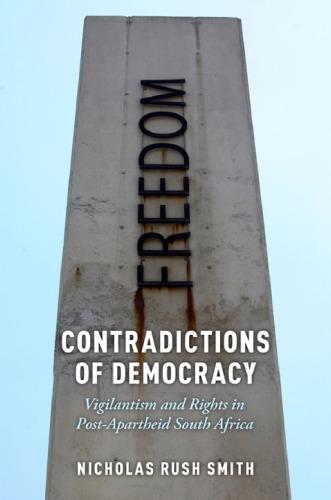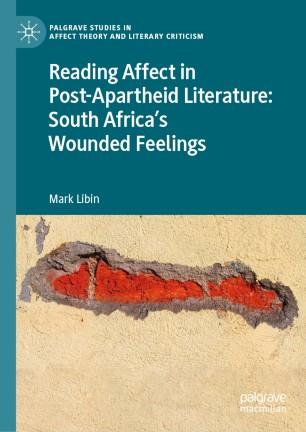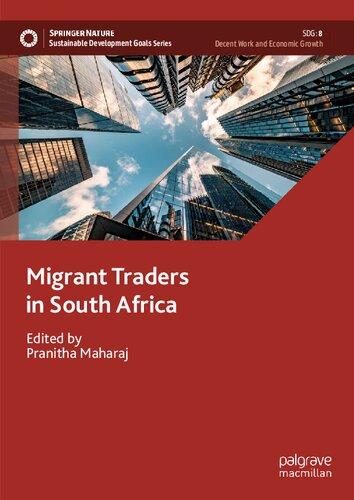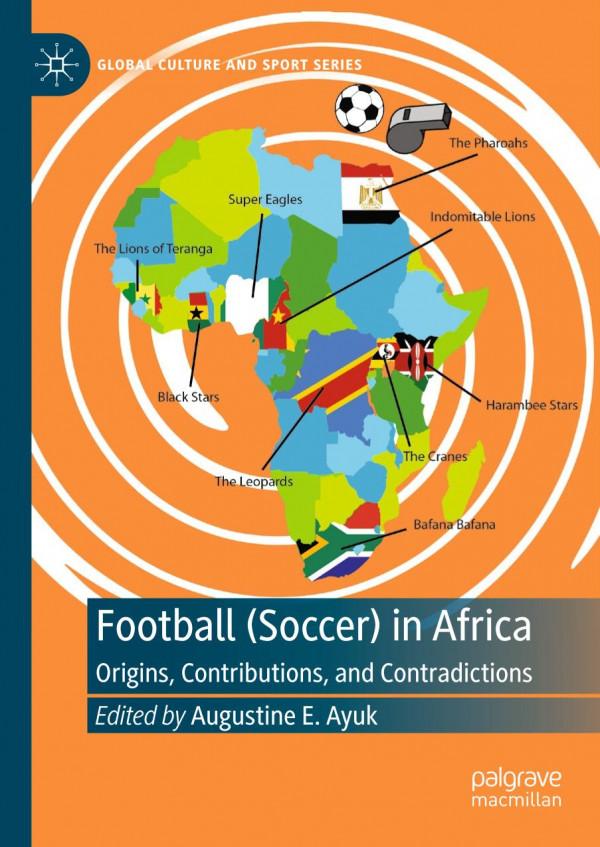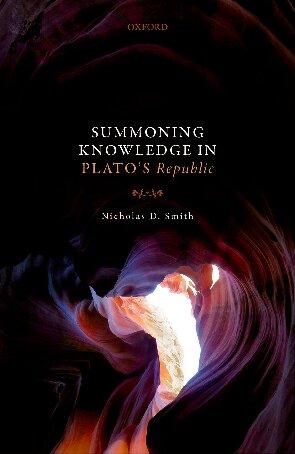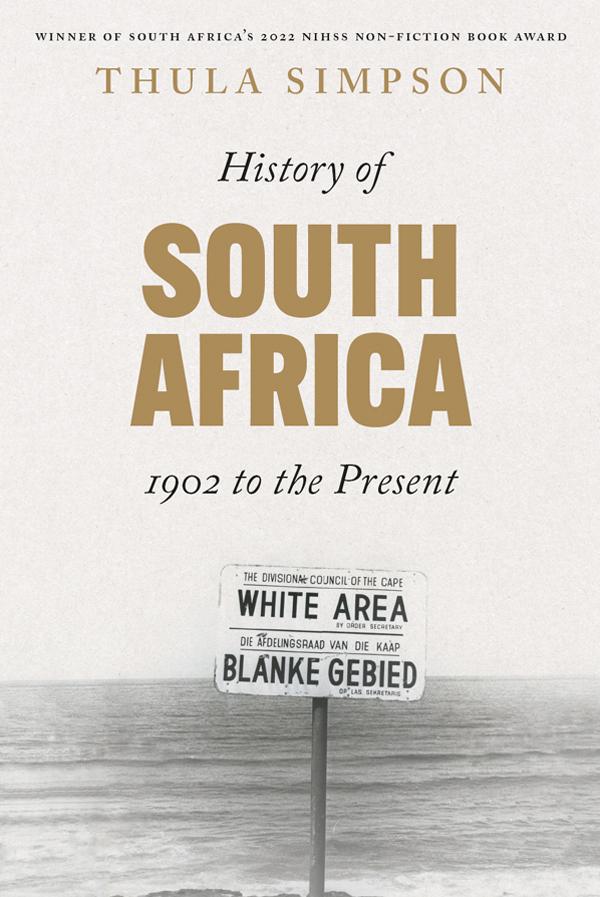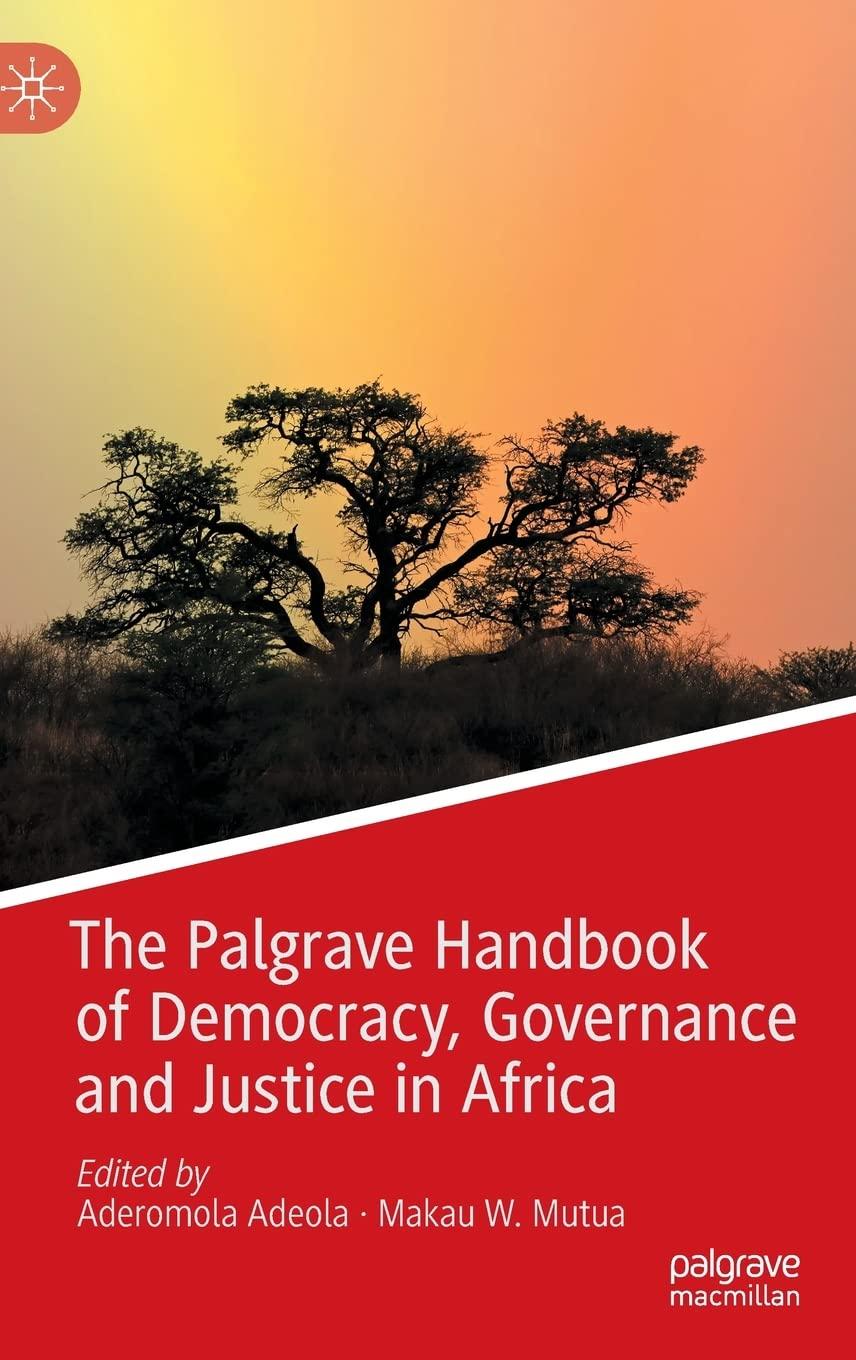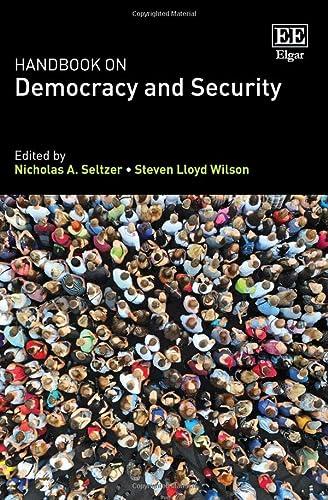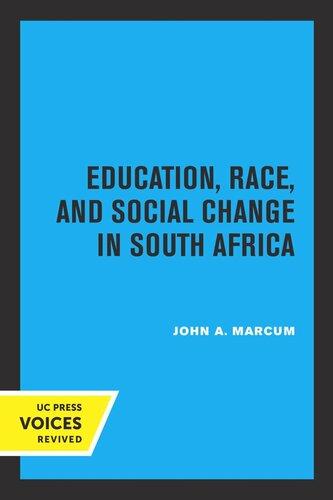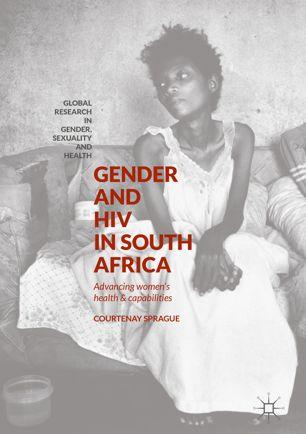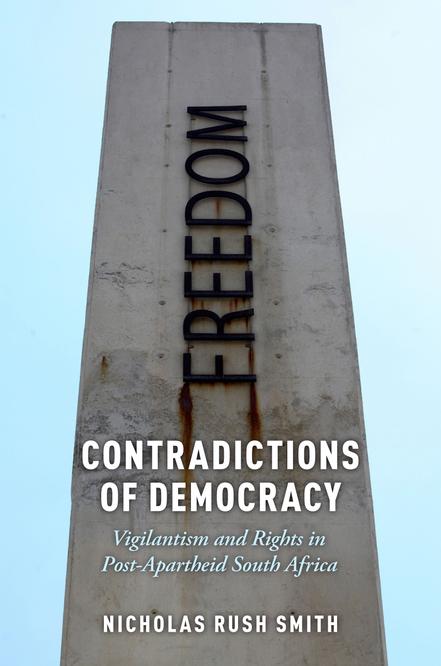1
Oxford University Press is a department of the University of Oxford. It furthers the University’s objective of excellence in research, scholarship, and education by publishing worldwide. Oxford is a registered trade mark of Oxford University Press in the UK and certain other countries.
Published in the United States of America by Oxford University Press 198 Madison Avenue, New York, NY 10016, United States of America.
© Oxford University Press 2019
All rights reserved. No part of this publication may be reproduced, stored in a retrieval system, or transmitted, in any form or by any means, without the prior permission in writing of Oxford University Press, or as expressly permitted by law, by license, or under terms agreed with the appropriate reproduction rights organization. Inquiries concerning reproduction outside the scope of the above should be sent to the Rights Department, Oxford University Press, at the address above.
You must not circulate this work in any other form and you must impose this same condition on any acquirer.
Library of Congress Cataloging-in-Publication Data
Names: Smith, Nicholas Rush, author.
Title: Contradictions of Democracy: Vigilantism and Rights in Post-Apartheid South Africa / Nicholas Rush Smith. Description: New York : Oxford University Press, 2019. | Includes bibliographical references.
Identifiers: LCCN 2018024600 (print) | LCCN 2018028939 (ebook) | ISBN 9780190847203 (updf) | ISBN 9780190847210 (epub) | ISBN 9780190847180 (hardcover) | ISBN 9780190847197 (pbk.)
Subjects: LCSH: Vigilantes— South Africa. | Crime—Government policy— South Africa. | South Africa— Social conditions—21st century. Classification: LCC HV9960.S6 (ebook) | LCC HV9960.S6 S65 2018 (print) | DDC 364.9680905—dc23
LC record available at https://lccn.loc.gov/2018024600
1 3 5 7 9 8 6 4 2
Paperback printed by WebCom, Inc., Canada
Hardback printed by Bridgeport National Bindery, Inc., United States of America
Dedicated to Meg: My life, my love, my amazing partner
CONTENTS
Preface ix
Introduction 1
1. Vigilantism and the Contradictions of Democratic State Formation 18
2. The People’s Justice: Historical Antecedents of Contemporary Vigilantism 38
3. Spectacles of Statecraft: The Truth and Reconciliation Commission and Post-Apartheid Lawmaking 57
4. Rights in Translation: Vigilantism and the Meanings of Institutional Effectiveness and Failure 81
5. Taking Charge: The Contradictory Pleasures of Citizen Crime-Fighting 107
6. The Risks and Rewards of Vigilantism 130
7. The Racial Geographies of Criminal Panic: Protesting Crime in the Suburbs 153
8. Against Vigilantism: Citizen and State Action to Combat Vigilantism 170
9. Lawmaking and State-Making as Vigilantism 191
Epilogue 213 Bibliography 219 Index 239
PREFACE
Mustachioed in my memory, the campus security director made it clear that the peaceable surroundings of the University of KwaZulu-Natal were deceptive. Set in the modest provincial capital, Pietermaritzburg, in the Midlands region of South Africa whose hills Alan Paton (2003, 2) famously remarked are “lovely beyond any singing of it,” the campus had the idyllic feel of a British boarding school, albeit with a considerably stronger sun. Silent because the school was on a break, the other members of the Fulbright-Hays isiZulu language program and I took in the lecture. With the bearing of a former police officer, he told us that beyond the campus fence—a fence that stood solemnly, soldier-like at the edge of the college—the peace on the campus gave way. As an example, I recall him relating the dangers of using an ATM at the suburban Scottsville shopping center just across the road. It was completely possible that robbers might pull up behind an unwary bank customer, he said, and mug them of their newly acquired cash. I thought the fit between the stories and the likelihood of victimization seemed out of joint, though I had no real evidence for that sense at the time. Nonetheless, this seeming disjuncture had real consequences for how the group saw the small world of Scottsville, affecting the willingness of at least some of the fellows to go beyond the shopping center to explore the suburb over the coming days. It was the first experience in South Africa that piqued my interest in the politics of crime.
The second experience happened later on that same trip during a homestay in a nearby rural village. I spent my time there mainly roaming around the area during the day with my host “brother” because we were roughly the same age and got on well. We mostly stayed close to home during the evenings though, partly because of the uncomfortable chill of the Midlands winter nights, but also because of security. This became clear to me one evening after we had ventured out late in the day to visit a sangoma (traditional healer) friend of his. We had stayed for several hours talking and because our host had been kind enough to serve us an unexpected dinner of stewed tripe and phuthu (mealie meal). By the time we were ready to depart, it was dark. As we said our goodbyes, I started in the direction of the main road
before my host brother caught me and steered me back to a smaller path that appeared to veer away from our house. He told me that it wasn’t safe to take the main road after dark because izigebengu (criminals) might accost us. I was surprised to hear this given that we were two relatively fit young men and my host brother was popular in the village. Still, he knew much better than me, so I shrugged and followed him on a tangle of paths back home.
The sense of insecurity that these two incidents brought to the fore troubled me emotionally, yet intrigued me intellectually. Like many others, I had initially become interested in South Africa because of its remarkable transition to democracy. I was particularly interested in the somewhat surprising decline in local neighborhood committees (known as “civics”) in the first decade following democratization, even though citizens were now free to organize (see Adler and Steinberg 2000). After this trip, though, it was apparent that the politics of crime and security were too prevalent to ignore and yet too opaque for me to fully understand in those early days. I determined I would learn more.
Over numerous subsequent trips totaling approximately twenty months of research in South Africa (June– September 2008, October 2009–October 2010, February–April 2011, July–August 2015, December 2016–January 2017), I threw myself into the politics of crime and punishment. I explored a number of questions—why crime was so high following democratization, how illicit markets operated—before settling on trying to understand why citizens so often turned to solutions outside of the state to protect themselves. Although some of the means, like hiring private security companies, were legal, many were not. In the press, stories of citizens violently confronting criminals were common across the country. Why was this happening, I wanted to know. As a student of political science, I had been long schooled to think that the purpose of the state, and particularly democratic states, was to protect its citizens. Why was that not happening here, a place where citizens had long struggled for a democratic legal system and the protections it supposedly provided? Was the apparent fecklessness of the police a sufficient explanation? How should a state respond to widespread resistance from citizens to its protection? And what do the sometimes violent ways citizens protect themselves tell us about how states establish (or fail to establish) fidelity to democratic law?
To answer these questions, I shifted away from the Midlands region and focused my energies primarily on two townships: KwaMashu, about 15 kilometers outside of Durban, and Sebokeng, about 60 kilometers south of Johannesburg (I explain why I worked in these areas in the introductory chapter). I divided my research time between roughly seventeen months of ethnographic fieldwork and three months of archival research. I worked
closely with three different research assistants for much of this time (two in KwaMashu and one in Sebokeng) who could make introductions and help break down the barriers of race, class, and nationality that come with being a middle-class, white American working in highly unequal African neighborhoods with long histories of racial oppression. IsiZulu language skills also helped me engage people who might otherwise be wary of researchers.
Consequently, in each field site I participated in wide-ranging practices. For example, I patrolled with anti-crime groups, attended anti-crime protests, and observed community justice initiatives. I interviewed community policing officials, traditional healers, small business owners, taxi owners, former policemen, and political officials. I spent time with young men who earn a living illegally, as their insecurity is acute. Although some may commit acts of violence, they are also possible targets of violence— both from vigilante citizens and from the police. More generally, I engaged in quotidian activities like meals, celebrations, and funerals to couch my understanding of vigilantism in larger structures of meaning. In short, I ate, drank, and often slept in KwaMashu and Sebokeng to understand the politics underlying vigilantism.
However, while my work was centered on KwaMashu and Sebokeng, it became apparent early on that I could not segment the townships off from larger processes of political, economic, and cultural circulation. KwaMashu and Sebokeng residents constantly move between neighboring townships, informal settlements, and cities, along with various destinations across the country from major metropolises to ancestral villages. An incredible range of media also circulate through the townships: newspapers, television, music, movies, cell phone videos, and rumors. As my interlocutors circulated, so did I. As my interlocutors consumed information, so did I. The result is that the arguments laid out in this book are not exclusively drawn from observations made in these two sites, nor are they reducible to these two sites. For instance, I worked in areas that border my primary field sites, including Ntuzuma, Inanda, and Phoenix near KwaMashu and Evaton, Sonderwater, and Sharpeville near Sebokeng. I also did research in places like Soweto near Johannesburg, Wentworth in Durban, the predominantly white suburbs of Durban and Johannesburg, and rural areas in KwaZulu-Natal and Limpopo provinces, as opportunities allowed. In short, even though KwaMashu and Sebokeng form the bedrock for my arguments, the arguments are not limited to these two places, even as the processes I identify in the book that follows may operate somewhat differently in other areas.
The arguments are also not anchored solely in my ethnographic practice. Early in my ethnographic research, I realized that post-apartheid
vigilantism has deep historical roots. So, to understand these complex patterns of structure and change, I spent roughly three months conducting archival research in Cape Town, Johannesburg, Pretoria, and Pietermaritzburg. The Mayibuye Archives at the University of the Western Cape in Cape Town provided access to primary documents showing how the African National Congress put forward its moral and political claims. It also contained an important set of papers (the Janine Rauch Papers) with primary documents on police reform during the transition years. In the University of Witwatersrand Historical Papers Collection, I collected important material on the transition-era conflicts in Sebokeng, vigilantism and self-defense units broadly, court cases on vigilantism under apartheid, and the records of numerous political organizations and law firms engaged in the fight against the apartheid state. Also housed at the University of Witwatersrand, the South African Historical Archive provided crucial material on the Truth and Reconciliation Commission (TRC). The same was true of the National Archive in Pretoria where I obtained copies of the video recordings of several notable TRC hearings. Similarly, the Alan Paton Centre at the University of KwaZulu-Natal in Pietermaritzburg yielded invaluable newspaper clippings about violence in KwaZulu-Natal under apartheid and during the transition (the Gerard Mare Collection was a particularly useful resource). The archivists at each of these institutions were extraordinary in suggesting relevant materials I would not have otherwise known to look for without their expertise.
The effect of conducting this in-depth historical research, interacting with a wide range of individuals, and performing ethnographic work, I believe, is that the claims about vigilantism that follow in the book are contextualized in an understanding of the anxieties and insecurities that challenge many South Africans. With that said, understanding these anxieties makes me concerned about how to represent violence in areas whose residents have long experiences of repression or marginalization. One obvious challenge is how to protect interlocutors while researching practices that may involve violence (Wood 2007; Fujii 2012; Parkinson and Wood 2015). Conscious of such challenges, in what follows I have anonymized interviews and created pseudonyms for individuals who spoke to me. In some instances, I have purposefully kept locational or practical details vague to provide an additional layer of protection. At the same time, much of the research that follows relies on archival, governmental, or journalistic material that is cited in the text or footnotes. Particularly when focusing on historical events, it made little sense to anonymize the details of organizations, locations, or historical actors because details of those events are discussed in publicly available materials. In some of these cases, like the historical events that comprise the primary material for Chapter 3, other
scholars have written about the same or similar events. In other instances, like the historical events that comprise Chapter 2, little scholarly literature exists on them and the arguments make novel empirical and theoretical contributions to our understanding of apartheid-era violence. In these instances, describing the specific groups, as historians typically do, made sense given the voluminous archival material the chapters draw upon, even as I anonymize the specific people I interviewed about the conflicts. Outside of the specific protections for research interlocutors, though, there is a second set of ethical challenges having to do with the representation of historically marginalized areas. In particular, there is a danger of focusing on an area’s violence, while ignoring or overlooking the other daily experiences residents have unrelated to this violence, many of which are quite joyous. Particularly in places like South Africa’s townships that have long histories of being stereotyped as violent, there is a danger of reproducing these stereotypes. How can one depict serious concerns about insecurity that residents have without sensationalizing an area’s violence? This presents a complicated challenge, to say the least. I have tried to address it in a variety of ways, though none may ultimately be satisfactory to readers or to residents of KwaMashu and Sebokeng. First, by using the two townships in comparison, I show that townships have important differences from one another, even as the similarities between KwaMashu and Sebokeng help draw out a larger narrative about vigilantism and democratic state formation. By considering the two places in comparison to one another, I hope to avoid using one township as representative of all townships, a problem that attends many studies of crime or policing in racially marginalized places (Small 2009, 9–10). Second, the arguments are drawn from places beyond KwaMashu and Sebokeng. We will see, for instance, how residents of Pretoria’s predominantly white suburbs exhibit surprisingly similar anxieties about South Africa’s rights regime as residents in predominantly black townships, despite their living in statistically much safer areas (Chapter 7). We will also ask how opponents of vigilantism have mobilized against it (Chapter 8), so as not to suggest that support for vigilantism is universal in South Africa. Lastly, in each of the chapters, I try to bring out tensions embedded within the politics of KwaMashu and Sebokeng in order to show the contradictions built into democratic citizenship that enable vigilantism. After all, it is the contradictions of democratic citizenship and state formation—a set of universal questions for democratic politics—that motivates this book, rather than the violence vigilantism often entails.
In writing a book, one incurs many debts and in the case of this book, those debts are deep. It began life as a dissertation completed in the political
science department at the University of Chicago under the direction of Lisa Wedeen, John Comaroff, Dan Slater, and Steven Wilkinson, an extraordinary group of scholars under whom to learn and to whom I will be forever indebted for taking me on as a student. From as early as her advisement of a long-ago master’s thesis, Lisa has been a model of how to pursue academia as a vocation, both as a teacher and as a scholar. John continues to provide his astute guidance on all things South Africa, a role as a South African national treasure he is uniquely well-suited to play. Dan has been both a friend and a co-author, who has engaged every project I have ever worked on with the same generosity of thought and spirit, even when he disagreed with what I had to say—the mark of a true mentor. Steven has an uncanny ability to see if there is a weak fit between empirical and analytical claims, having an astute eye for argument and detail, trained through years of historically informed work—an eye through which I have tried to see in writing this book. I only hope that the material that follows in the book lives up to the work each of these extraordinary scholars has put into it and into training me over many years.
My debts extend well beyond Chicago, though. Indeed, they are transcontinental and are owed most deeply in South Africa. Within South Africa, those debts are owed, first and foremost, to Kwazi Manzi, Mxolisi Motsepe, and Ayanda Sithole. In many ways, the work produced here is as much the product of their hard work as it is of my own. I spent countless hours with each man roaming around townships, city centers, suburbs, informal settlements, and rural villages, as we collectively explored the complexities of post-apartheid South Africa. The debt I owe to each is a lifelong one for this book could not have been produced without them. I hope they are proud of the hard-fought and too often delayed final result. I owe a similar debt to the Sithole family of KwaMashu and the Khumalo family of Sebokeng for welcoming me into their homes and for their willingness to form bonds of fictive transcontinental kinship. Sadly, each family has lost members over the years it has taken to complete this book. I prefer to think, though, of the ways in which each family embodied the best spirit of ubuntu by putting up with a stranger’s eccentricities with grace and kindness that has been life-changing in the best possible ways.
Academically, I also owe debts in South Africa. During the longest stretch of my fieldwork, the Centre for Civil Society at the University of KwaZuluNatal proved an ideal place for a young fieldworker to be based. Under Patrick Bond’s leadership, the Centre fostered an extraordinary collection of organic intellectuals knowledgeable about community-level politics in Durban. Though they are no longer at the Centre, without the help of MaDudu Khumalo, Orlean Naidoo, and especially Faith Manzi and Oliver Meth this project would have been impossible to get off the ground. The sadly departed
Bobo Makhoba, of the Soweto Electricity Crisis Committee, similarly made several crucial introductions in Soweto and the Vaal that facilitated my research in Sebokeng. Though I was not officially affiliated with the University of Witwatersrand, I found a welcoming community of scholars there while conducting fieldwork in Gauteng, particularly through Kelly Gillespie and Julia Hornberger. In a similar spirit, numerous friends in the field kept my spirits bright during the inevitable challenges of fieldwork. Al Duncan, Lauren Jarvis, Tayo Jolaosho, Jill Kelly, Tim Gibbs, Dan Magaziner, and Jon Soske all provided happy company at various points during research. A host of crime and policing researchers, including David Bruce, Monique Marks, and Peter Gastrow, generously shared their insights. In this regard, Jonny Steinberg deserves special mention. Jonny was an incredible supporter of this project from even before I began my fieldwork. He has been consistently generous with his time, insights, support, and, along with his husband Lomin Saayman, friendship throughout research and writing.
Back in the United States, friends and colleagues at a number of institutions and commentators at a number of conferences have had an enormous impact on the development of this project. Emma Jacobs, Dan Magaziner, Zachariah Mampilly, Michael Pfeifer, Stephanie Schwartz, Jillian Schwedler, Anastasia Shesterinina, and the sadly departed Lee Ann Fujii provided amazing comments on the first complete version of this manuscript at a book workshop at the City College of New York in 2016. Over many years, either in serving discussant duties at conferences or workshops, through participation in shared writing groups, or through sheer kindness of heart, I have received amazing feedback on portions of the manuscript from Leonardo Arriola, Emily BelloPardo, Jonathan Blake, Nick Cheesman, Killian Clarke, Sarah-Jane CooperKnock, Adam Dean, Youssef El-Chazli, Stephen Ellmann, Chris Haid, Jack Goldstone, Jeff Goodwin, Yanilda Gonzalez, Daragh Grant, Sheena Greitens, Mark Gross, Anne Holthoefer, Sana Jaffrey, Corinna Jentzch, Diana Kim, Jennet Kirkpatrick, Kathleen Klaus, Heinz Klug, Gary Kynoch, Milli Lake, Faith Manzi, Kwazi Manzi, Eleonora Mattiacci, Lauren McCarthy, Jeremy Menchik, Nosipho Mngomezulu, Jonathan Obert, Jeffrey Paller, Sarah Parkinson, Mary Robertson, Franziska Rüeedi, Josh Rubin, Gema Santamaria, Suzanne Scoggins, Jeremy Seekings, Erica Simmons, Matthias Staisch, Jonny Steinberg, Harold Trinkunas, Manuel Viedma, Rosa Williams, Susan Woodward, Michael Yarbrough, and Deborah Yashar. Timothy Pachirat, Peregrine Schwartz-Shea, and Dvora Yanow provided important counsel on questions of method.
Similarly, audiences at lectures or academic conferences, both in the United States and South Africa, have made the book better by taking seriously less polished versions of chapters contained within. These include audiences at the universities of Chicago, Cape Town, Florida, KwaZuluNatal, and Pennsylvania along with Bates College, the CUNY Graduate
Center, George Washington University, John Jay College, New York Law School, Northwestern University, Yale University, Vassar College, and the City College of New York, as well as audiences at the annual meetings of the American Political Science Association, the African Studies Association, the Midwestern Political Science Association, the Western Political Science Association, and the Northeastern Workshop on Southern Africa.
Without the assistance of several funding and archival organizations, this project never would have been possible. An International Dissertation Research Fellowship from the Social Science Research Council funded a year of fieldwork in South Africa for which I am thankful. Funding from the Provost’s Office, the Division of Social Sciences, and the Department of Political Science at the University of Chicago, and the Provost’s Office at the City College of New York enabled additional research. The Faculty Fellowship Publication Program and a Book Completion Award, both from the City University of New York, provided valuable course releases or funds to finish production of the manuscript. Fellowship and grant support from the Foreign Language and Area Studies program of the U.S. Department of Education, the Group Project Abroad program run by Fulbright-Hays, and the African Studies Workshop at the University of Chicago enabled isiZulu language study.
The City College of New York, my current academic home, has been an incredible place to write this book. The Colin Powell School of Civic and Global Leadership within the college—under the leadership of both Vince Boudreau and Kevin Foster—hosts a range of dynamic scholars who have pushed my thinking about how to present and structure the ideas contained within this book. My colleagues within the department of political science, under the inimitable chairmanship of Bruce Cronin, have been a particular source of encouragement and tolerance as I took various forms of teaching leave to finish this book. The students within the department, many of whom are the first in their families to go to college, have been a constant reminder of the revolutionary importance of education.
At Oxford University Press, I owe a debt to James Cook, who took an early interest in the project and took a gamble on a junior scholar. It has been a dream working with him and his team. Similarly, James Jasper, the series editor, has been an incredible supporter of this book from its first proposal until its final appearance. He has read numerous drafts of chapters, often on short notice, while lending his expert eye on how to reframe arguments or rearrange content so that it would read more effectively. It has been an enormous privilege and learning opportunity to work with him. The book is much better for his guidance.
Finally, although this book benefited from the assistance of many individuals and institutions, my primary debts are owed to my family. My
parents, Conrad and Patricia Smith, have enabled me, since my childhood, to pursue my dreams, including, most recently, my dream of pursuing a PhD. Without their emotional and material support over many, many years, I have no doubt this book would have never come to pass. Were it not for my father’s work for the U.S. government abroad and my mother’s joyfulness in the face of change, I likely never would have wanted an itinerant life that takes me across the world. And, yet, I was fortunate to have parents who fostered this quality, which made pursuing a project far away from anywhere I had previously known thinkable and possible. I regret that both my father and my mother passed away before they could see this book in print as, in many ways, it is a joint production of which I hope they would be proud.
If my parents provided the worldly imagination that made this book thinkable, my wife, Meg Alexander, has provided the daily motivation and love that made this book possible. She has had to abide by more disruption than most spouses have to endure in a marriage. Not only did she put up with a partner earning graduate student wages for too long, about a month after we were married I skipped town for another continent to conduct fieldwork for a year. She has coped with repeated lengthy absences since. When I am around, I’m not sure things are necessarily any better, as she has had to live with a nervy, grumpy academic, who constantly grouses about not being able to pursue some fun activity because he has a book to finish. Despite all of this, she has constantly encouraged me to work in order to make this book the best it could possibly be and repeatedly assented to my performing additional rounds of research when I had questions I still needed to answer. Through it all, Meg has been, quite simply, an amazing partner. For that reason, I dedicate this book to her.
Contradictions of Democracy
Introduction
Acrowd of protestors gathered outside the Vanderbijlpark Magistrate’s Court on a bright September morning to hear whether the pastor accused of raping one of his teenage parishioners would again be denied bail.1 Similar protests had been staged at each of the previous bail hearings to ensure the pastor would be remanded to custody. Crowds had even burned impepho (herbs used for traditional medicine) at these earlier gatherings to sway the judge’s decisions and guarantee the pastor would remain in jail while awaiting trial.2 So, it hit hard when the news filtered out of the courtroom that the state would withdraw the charges after concluding the physical evidence contradicted the accuser’s claims.3 Angered over the decision, the protestors roughly forced their way past the security guards at the front of the courthouse. As a local newspaper put it, members of the crowd were “baying for the blood of the suspect” as they stormed into the building.4
The police were prepared for the attempt at vigilante violence, though. Indeed, this was not the first time that residents of nearby Sebokeng, where the alleged victim lived, had attempted to take the law into their own hands
1. Kutlwano Olifant and Thokozile Yokwana, “Pastor Accused of Raping Teenager,” The Star, September 11, 2012, http://www.iol.co.za/the-star/pastor-accused-of-raping-teenager1.1380081#.VbUvEbdC0nU.
2. Lazarus Dithagiso, “Accused Supported by ‘Muthi’ at Court,” Sedibeng Ster, September 12, 2012.
3. Kutlwano Olifant, “Anger as Pastor Is Let Off Rape Charge Withdrawn,” The Star, September 18, 2012, http://www.iol.co.za/the-star/anger-as-pastor-is-let-off-rape-chargewithdrawn-1.1385207#.VbU077dC1sM
4. Lazarus Dithagiso, “Crowd Runs Amok as Transferred Case Withdrawn,” Sedibeng Ster, September 19, 2012.
when the state’s legal procedures did not accord with the justice residents demanded. Several months earlier, in neighboring Evaton, protestors had tried to burn down the church to which the pastor belonged after rumors circulated that the bishop there used witchcraft and Satanism to perform the healing “miracles” for which he was nationally famous. Although the bishop insisted the rumors were motivated by jealousy over his high-end cars,5 dark stories spread through the township that, among other misdeeds, he was snatching children’s souls and turning them into oil.6
Although such occult acts are considered dangerous crimes by many township residents (Ashforth 2005), the state’s procedure-based legal institutions are ill-equipped to address them. While residents had taken the allegations to the police, officers had been unable to intervene because of the lack of physical evidence, leaving aggrieved residents no legal options to protect themselves from the bishop’s rumored villainy.7 Feeling abandoned by the legal system and charged by the outrageous accusations following a mass meeting organized by a local civic association, residents decided to take the law into their own hands and burn down the bishop’s massive brick church. Over the ensuing days of unrest, police fought hard to do their duty and control the crowd.8 Yet the police found themselves on the wrong side of the community’s sense of justice as, in effect, the officers protected the “Satanic” church from residents’ attempt to cleanse the community of the alleged occultism.9 That is, residents saw the police as protecting criminal acts, rather than protecting the community.
Now, several months later in September, this policing dilemma repeated itself at the Vanderbijlpark courthouse. Police officers again protected a perceived criminal when they shielded the exonerated pastor from the crowd’s violence after the modern magic of DNA evidence cleared him of the rape charges.10 In this case, the pastor was spirited out the backdoor of the courthouse by twelve members of the Amabarette, an elite armed reaction team, before the crowd could lynch him. For some of the protestors, unsuccessful in their attempt at vigilante justice, the withdrawn case and subsequent police rescue became a referendum on their country’s democracy. “We have
5. Mdudzi Mathebula, “False Prophet or False Accusations?” Sedibeng Ster, April 29, 2012.
6. Noni Mokati, “Crowd in March on Church Accused of Satanism,” Saturday Star, March 26, 2012, http://www.iol.co.za/saturday-star/crowd-in-march-on-church-accused-of-satanism-1. 1264102#.VbUujLdC0nU
7. Ibid.
8. Ibid.
9. Poloko Tau, “Cops Protect ‘Satanic’ Church,” The Star, March 22, 2012, http://www. icyte.com/system/snapshots/fs1/1/c/f/1/1cf19de8c5818812bb53661a021ca2178bf32577/ index.html
10. Olifant, “Anger as Pastor Is Let Off Rape Charge Withdrawn.”
been let down by the justice system of the very government we elected to power,” one of the crowd members lamented to reporters.11
The would-be vigilantes were aggrieved by the withdrawn charges. Yet, the dismissal was arguably the outcome of a technically successful democratic legal system governed by clear legal procedures and rules of evidence. After all, with both the occult crimes and rape case, evidence was either not available to secure a conviction or suggested strong reasons to dismiss the charges. In both instances, the law’s procedures were followed, even as residents saw them as perpetuating insecurity. This tension suggests the problem in the case was not the government’s technical failings but an underlying tension between citizens’ desire for assured security and inherently fallible legal procedures. It was a tension, the events at the courthouse and church suggest, from which the seeming certainty of vigilante violence did not suffer.
AMBIGUITIES OF DEMOCRATIZATION
Nearly twenty-five years after Nelson Mandela triumphantly became South Africa’s first post-apartheid president in elections that heralded a democratic transition hailed by commentators as a “miracle” (e.g., Waldmeir 1997; Sparks 2003), vigilantism is both a specter haunting South Africa’s legal system and a grim reality in its streets. In any given year, the South African Police Service estimates that between 5 and 10 percent of the country’s murders result from vigilante violence—four to five times the percentage it attributes to gang violence (South African Police Service 2009a, 11, 2016, 14). Examinations of mortuary records (Herbst, Tiemensma, and Wadee 2015) and victims surveys (Proctor, Carter, and Barker 2009, 160 fn. 3) suggest similar percentages, particularly at the lower estimate, noting an overall increase in deaths from vigilante violence in some neighborhoods (Herbst, Tiemensma, and Wadee 2015) even as the country’s murder rate plummeted in the two decades following democratization (Kriegler and Shaw 2016). Such statistics suggest that over 800 people might die in any given year as a result of vigilantism. Police estimates may even underestimate the scale of violence in some parts of the country. Researchers from the Centre for the Study of Violence and Reconciliation (CSVR), for instance, estimate that in certain areas the percentage of murders from vigilantism may be closer to 15 percent (CSVR 2008, 73). That vigilantism is a common and, to a degree, expected response to crime also resonates in
11. Dithagiso, “Crowd Runs Amok as Transferred Case Withdrawn.”
popular consciousness. A majority of respondents in one opinion poll, for example, said that if a criminal were caught in their community, it was more likely he would be beaten than turned over to police.12
Such high rates of vigilantism—by which I mean extrajudicial punishment13 are perplexing given that the struggle against apartheid was also for the administration of justice by a democratic state (Ellmann 1992; Abel 1995; Meierhenrich 2008). Yet, vigilantism is commonly practiced in numerous young democracies throughout Latin America (Goldstein 2004; Taussig 2005; Godoy 2006; Arias and Goldstein 2010), Asia (Hedman 2002; Tajima 2014), and Africa (Baker 2002; Kirsch and Grätz 2010; International Crisis Group 2017). This book explores the relationship between vigilantism and democracy through the South African case. It asks: Why is vigilantism frequently practiced in post-apartheid South Africa despite a celebrated transition to democracy, a lauded constitution, and massive transformations of the state’s legal apparatus following democratization? What insights does South Africa provide about the spread of vigilantism in so many young democracies? What does vigilantism reveal about how democratic states produce order?
As I detail below, most accounts of vigilantism focus on state failure or civic failure, arguing that vigilantes step in for states that cannot provide
12. World Justice Project, “South Africa: Nation Lags Behind in Preventing Crime and Vigilante Justice, New Global Study Finds,” Allafrica.com, October 15, 2010. http://allafrica. com/stories/201010150916.html.
13. This concept is intentionally capacious and, more or less, compatible with existing concepts in the literature with two important exceptions (Rosenbaum and Sederberg 1976, 4; Johnston 1996; Abrahams 1998, 6–10, 2002; Moncada 2017). First, unlike Rosenbaum and Sederburg’s (1976; see also Johnston 1996, 231) definition of vigilantism as conservatively oriented “establishment violence,” I do not assume that there is a political ideology inherent to vigilante practices. In South Africa, vigilantism has been practiced by both left-leaning (e.g., Seekings 1990) and right-leaning (e.g., Haysom 1986) groups. Second, I depart from the existing literature by emphasizing punitive rather than protective practices because the assumption that vigilantism provides protection is dubious. As I show in Chapter 6, vigilantism may produce new forms of violence as its targets fight back. By conceptualizing vigilantism broadly, I hope to consider a variety of practices where citizens violate the law, even as they claim to be upholding it when punishing others.
It is also important to note that the word vigilantism is politically charged. Even as it can carry negative connotations of lawbreaking, antisocial violence, the term is analytically useful because of its historical and linguistic origins. When deployed in ordinary language, the word “vigilantism” captures the sense that those who engage in the practice are active, critical citizens because of its linguistic connections to words like “vigilant” and “vigilance” (Abrahams 1998, 4–6; see also Pitkin 1972). Indeed, the language of vigilance has often been eagerly adopted by watchful citizens looking to change their societies for the better. For example, during South Africa’s colonial period, Africans formed “Vigilance Associations” to defend their rights against the state’s increasingly racist legal apparatus (Dubow 2012, 39). Thus, even though the word vigilantism carries negative connotations, the language of vigilance captures the uncomfortable blurring between contemporary vigilantism and other practices of citizenship, a key theme in this book.
order or emerge from societies where social bonds are fractured. By contrast, as I elaborate in greater depth in the next chapter, this book argues that the eruption of vigilantism in South Africa is a response to processes of democratic state formation and is fostered by dense civic networks. Specifically, vigilante citizens contest the extension of constitutional rights, the establishment of which are a key aspect of democratic statebuilding (see also Buur and Jensen 2004; Buur 2008). They argue due process rights produce insecurity because suspects may be released back into neighborhoods following arrest where they can continue to prey on residents. This means that in local context residents interpret the technical success of legal institutions—for instance, the arrest and subsequent release of suspects on bail or the withdrawal of charges when there is sufficient evidence—as failure. In South Africa’s townships, where there are deep neighborhood ties, these understandings are intensified as the suspect may be one’s own neighbor (see also Cooper-Knock 2014) and is therefore “known” to would-be crime fighters. Such crime fighters can then rely on local networks—networks that were often born during the struggle against apartheid—to mobilize a response. In such a setting, the extension of a strong rights regime may, counterintuitively, make vigilantism more likely, as vigilant citizens work to correct “failures” in the state’s legal procedures. In this sense, vigilantism might best be viewed as an uncomfortable form of citizenship in which citizens critically watch how the law is enacted, forcefully challenge how the state protects its citizens, and assert an alternative moral basis for democratic law to the procedure-based model that dominates modern constitutional democracies.
Importantly, though, vigilantism is not only a response to state formation; vigilantism also provides a new lens through which to understand state formation. Specifically, when viewed through the eyes of young men of color, South African lawmaking and state-making often appear to mimic vigilantism—an inversion of Charles Tilly’s (1985) famous argument that states mirror protection rackets. This mimicry has two forms. First, state officials critique the country’s rights regime for allegedly perpetuating disorder and advocate for violent policing as a response to crime in language that mirrors the demands of vigilante citizens (see e.g., Hornberger 2013; Jensen 2014). Second, young men suspect that police officers on the ground have heeded these calls and “shoot to kill” suspects (Bruce 2012), potentially violating the constitution in the process. When viewed through the eyes of those being policed, despite a long and violent struggle against the apartheid state’s capricious legal apparatus, ironically, the democratic state may be experienced by some of its citizens as increasingly procedure-less. In this sense, seeing democratic state-building through the lens of vigilantism exposes just how contradictory and violent processes of democratic
state formation can be, while raising key questions about the role that states should play in regulating social relations. That is, attention to the politics of vigilantism may upend the very purposes of the state itself. Scholars and activists alike have argued that a primary purpose of the state is punishing those who have committed wrongs. Indeed, much of the discussion in young democracies like South Africa is how to ensure that the state performs this task “efficiently” through its judicial apparatuses to ensure that the rule of law functions “effectively.” However, such technical language may hide pernicious effects. While residents of South Africa’s townships (or comparable places across the globe like Brazil’s favelas or France’s banlieues) experience too much insecurity, the proposed solution—more policing and more prosecution—implies, intentionally or not, the need for more state violence to regulate social life in these communities. Even more, the population that bears the brunt of this state force tends to be very concentrated: young men of color on society’s margins (Wacquant 2008, 2009; Vitale 2017). It also results in a sense among these young men that the state is more likely to harm them than protect them, as they worry they lack the substance of the democratic rights they are due. Attention to the politics of vigilantism—a politics that is ultimately connected to a politics of punishment—should, therefore, serve as a caution about the unintended consequences of even well-meaning demands for more policing and prosecution. This is especially the case in young democracies like South Africa where demands for policing and punishment are often loud in the face of rampant citizen insecurity.
ARGUING ABOUT VIGILANTISM
These arguments about the sources of vigilantism stand in contrast to dominant explanations for vigilantism. Such explanations can be separated into two broad categories: state failure explanations and civic failure explanations. State failure accounts come in several forms. One group of scholars working in this tradition explains vigilantism as a response to the state’s failure to police, prosecute, or imprison (e.g., Baker 2002; Sekhonyane and Louw 2002; Khayelitsha Commission of Inquiry 2014)— a problem that is magnified by processes of political transition when institutional routines are in flux (e.g., Amnesty International 2012). Others explain vigilantism as a response to the state’s failure to provide meaningful access to social rights (Caldeira and Holston 1999; Goldstein 2004; Godoy 2006; Arias and Goldstein 2010)—a problem that is most acute in states that fail to transform authoritarian institutions (Huggins 1991; O’Donnell 1993; Cruz 2011). Such arguments have particular resonance
in South Africa where the legacies of apartheid continue to haunt the criminal justice system in numerous ways (Gastrow and Shaw 2001; Shaw 2002; Schärf 2001; Gordon 2006; Kynoch 2016). Still others see vigilantism as a response to a different form of state failure—what might be termed state withdrawal—where states, under conditions of neoliberalism, shed responsibility for governing security (Bayley and Shearing 1996; Garland 1996; Simon 2006; Samara 2011; J. Comaroff and Comaroff 2016) and “outsource” (Buur 2005; Hansen 2006) the state’s security functions in poor areas to vigilante groups who provide “a cheap form of law enforcement” (Sen and Pratten 2008, 3).
These state failure explanations contrast with accounts that see vigilantism as a response to civic failure. Some scholars in this tradition see vigilantism as a response to collapsing civic and communal trust (Potholm 1976; Rosenbaum and Sederburg 1976; Godoy 2006) and the state legitimacy often associated with them (Kushner 2015). Other scholars highlight the challenges of integrating indigenous or rural populations that have their own justice traditions into modernist legal institutions (Starn 1999; Goldstein 2012; J. L. Comaroff and Comaroff 2008; Hickel 2015), a challenge that in the African context often has its roots in the colonial state’s bifurcated legal regime (Mamdani 1996). Still others look to political competition that frays connections between citizens and states, a problem made most acute when politicians use security concerns to mobilize voters (Anderson 2002; Kagwanja 2003; Heald 2006; Meagher 2007; Fourchard 2011, 2012). A final group, often focusing on the American context, connects vigilantism to racial or ethnic violence where extrajudicial punishment serves as an informal means for ensuring racial dominance in a divided society (Brundage 1993; Tolnay and Beck 1995; Waldrep 2002; Evans 2009; Krupa 2009; Smångs 2016).
South Africa is a particularly apt place to study the relationship between vigilantism and democratic state formation because its prevalence, relative to existing explanations, is in important respects surprising. The same is true of the two fieldsites at the heart of this book, KwaMashu and Sebokeng, respectively an urban township outside of Durban and a periurban township south of Johannesburg. For someone trying to understand the underlying logics of vigilante action, the two townships present a useful set of similarities and contrasts that can be placed in a wider analytic and historical narrative to understand post-apartheid vigilantism. Since the end of apartheid, both KwaMashu and Sebokeng have consistently experienced vigilantism, despite the very different trajectories that the two townships have taken since the end of apartheid—differences that run against many existing explanations from the literature on vigilantism in democratizing states.
To be clear, while I suggest in what follows that existing explanations have difficulty accounting for vigilantism in both KwaMashu and Sebokeng and potentially other areas of South Africa, I am not suggesting we should discount these explanations altogether. On the contrary, much of what follows in the book tries to explain the complicated ways in which these various factors impact the practice of vigilantism—what Erica Simmons and I call elsewhere “comparison with an ethnographic sensibility” (Simmons and Smith 2017).14 For instance, if comparative evidence suggests that crime is unlikely to be a sole explanation for vigilantism but residents consistently cite it as a major concern, the question becomes how crime intersects with vigilantism—a question of process rather than static variables. While I explain below why high crime is an insufficient explanation for vigilantism in varying parts of South Africa, I detail in the empirical chapters of the book how citizens experience various forms of physical and moral insecurity, which can feed vigilantism. Similarly, by working in these two townships, my goal is not to explain vigilantism in every part of South Africa. The eruption of vigilante violence may have multiple pathways and dynamics. For instance, there may be differing dynamics in informal settlements where mobilization against apartheid was not deep (e.g., Harber 2014) or in rural areas where vigilante violence is led by conservative elders (e.g., Oomen 2004; J. L. Comaroff and Comaroff 2008; Smith 2015). Nonetheless, I would suggest that even if there may be different dynamics at work in other parts of the country, the comparison of KwaMashu and Sebokeng highlights potential limitations of existing explanations and exposes contradictions of democratic state formation that might not be apparent if one looks primarily to state or civic failure to account for vigilantism.
Take arguments that vigilantism results from the state’s failure to police, prosecute, and imprison, for instance. (I discuss this explanation at some length because of its influence and intuitive sense.) In KwaMashu and Sebokeng there is an empirical mismatch between crime rates, police effectiveness, and the presence of vigilantism. In 2009, just before I began the majority of my fieldwork, KwaMashu received the dubious honor of being named South Africa’s “murder capital” because of its remarkable rate of violence.15 Predictably, vigilante violence is common there (CSVR
14. This contrasts with traditional applications of Mill’s (2002; see also Przeworski and Teune 1970) methods of similarity and difference, which would fully rule out alternative explanations (see Simmons and Smith 2017).
15. Caryn Dolley, “Kwamashu Takes over Nyanga’s Title,” IOL News, September 22, 2009, http://www.iol.co.za/news/south-africa/kwamashu-takes-over-nyanga-s-title-1.459380
2008, 73).16 However, in Sebokeng the story is very different. Crime rates there have plummeted—a nearly two-thirds reduction in the murder rate between democratization in 1994 and 2009 when I began the bulk of my fieldwork (South African Police Service 2004a, 2004b, 2009b, 2011).17 The area’s poverty and history of violence make the reductions all the more remarkable. Nonetheless, vigilantism regularly featured in local news reports during this period, suggesting the relationship between crime control and vigilantism is neither functional nor direct.18
This explanatory challenge is repeated at the national level. Given South Africa’s notoriously high crime rates, accounts pointing to failing policing and judicial institutions seem to be a likely explanation. It is undoubtedly the case that crime in South Africa is far too common and too many citizens, particularly in its poorest areas, face insecurity that is far too great (Khayelitsha Commission of Inquiry 2014). Rates of sexual violence, for instance, are notoriously high and prosecuting such crimes is notoriously difficult (Lake 2018). Yet, contrary to popular perception (see, e.g., J. Comaroff and Comaroff 2006a), violent crime has plummeted since the end of apartheid. The national murder rate (typically taken by criminologists to be the most reliable crime statistic) has dropped by over 50 percent since the end of apartheid, and now approximates murder rates from the late 1970s (Kriegler and Shaw 2016, 185). Such dramatic crime declines have led two of South Africa’s leading criminologists to conclude that “the past two decades have shown unprecedented improvement in the physical safety of the vast majority of people in the country.”19 Nonetheless,
16. Subsequent to my beginning fieldwork, the KwaMashu police precinct was split into two precincts, KwaMashu E Section and Ntuzuma. I continued to conduct work in each station’s area of patrol, as that is how they were originally established.
17. Due to its size and complicated geography that intersects with its older neighbor, Evaton, parts of Sebokeng are policed by the Evaton police station. Given that I conducted research in Sebokeng across the two precincts (and in Evaton proper), I have combined statistics from the two police stations, although this also captures crime from Evaton. People regularly move across the borders of Sebokeng and Evaton, however, making it appropriate for me to conduct research in both precincts. There were 245 murders recorded in the two stations during the 1994–1995 statistical year, which had dropped to 163 by 2003–2004 and to 87 by 2008–2009, the year prior to conducting the majority of my field research (South African Police Service 2004a, 2004b, 2009b, 2011).
18. One might ask if the decline of Sebokeng’s murder rate is due to particularly virulent vigilantism. However, comparison with KwaMashu suggests reasons to be skeptical of such a claim. First, KwaMashu has astonishingly frequent vigilante violence (CSVR 2008, 73) but crime has not declined nearly as dramatically as in Sebokeng. Second, vigilantism may be as much a source of violence as it is a solution. Indeed, vigilantism may increase crime rates as such murders appear in police dockets. Thus, the relationship between vigilantism and crime is unclear at best.
19. Anine Kriegler and Mark Shaw, “Facts Show South Africa Has Not Become More Violent since Democracy,” The Conversation, July 21, 2016, http://theconversation.com/ facts-show-south-africa-has-not-become-more-violent-since-democracy-62444
